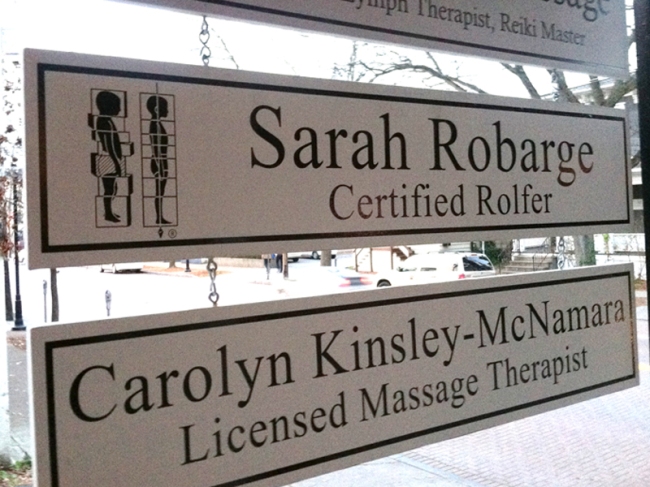By John Vogan & Allie Healy
When Sarah Robarge was 15 years old, a horse ride changed her life. That fateful day, her horse became startled and reared up, throwing her from the saddle and onto the ground before the animal fell on top of her.
The accident resulted in two back fractures in and a hip injury. On and off for the next 15 years, Robarge had to wear a back brace and tried everything from medication to surgery to massage therapy, but still suffered debilitating pain.
That is, until, she discovered Rolfing, a unique kind of massage therapy aimed at realigning the body to minimize pain and tension. Ida Rolf, a biochemist, created Rolfing in the 1930s. After completing a series of Rolfing therapy with Wells Christie in Syracuse, Robarge’s pain was gone.
Robarge completed a Ten-Series, which typically spreads one-hour sessions once a week over 10 weeks, but could be extended to progress once a month over 10 months. The first three sessions are known as superficial sessions, working the superficial layers of the fascia, also known as connective tissue.
“It just changed my life so much that it inspired me to do that, so I could help people the way that I was helped,” Robarge said.
According to the Affordable Care Act section 2706 titled “Non-Discrimination in Healthcare,” insurance issuers “shall not discriminate with respect to participation under the plan or coverage against any health care provider’s license or certification under applicable State law.” Because Robarge’s practice is licensed, Rolfing would be covered by insurance, dependent on the individuals insurance provider.
Robarge now practices as a certified Rolfer, but getting to this point was not easy. New York state requires Rolfers to be licensed as massage therapists first, and the only Rolf Institute currently in the United States operates their instruction in Colorado.
Robarge spent the first semester studying in Colorado, and then travelled to other parts of the world where the practice is more widely practiced. She lived in Malaysia for the second semester, and studied for the third semester in Bali and Indonesia.
Rolfing is more thorough than traditional massage therapy and based on discovering the source of tension-related problems, Robarge said.
“To give an example, say you have sore shoulders. If you went and saw a massage therapist, you’d go in and you’d get a shoulder rub,” she said. “Most people’s sore shoulders are caused by tension in the front of the body. If you have tension either in your chest or abdominals or your legs, you are going to be pulled forward in your gravity. It’s pulling on your back.”
Unlike the temporary relief and relaxing chemicals released in a typical massage, Rolfing aims to realign the body to help the pain dissipate all together.
Susan Winter, the Manager of Marketing at the Rolf Institute, said the practice used to be more intensive and painful. The founder, Ida Rolf, initially would patients lay on the floor instead of a table.
“We’ve learned over the years about the nervous system, you don’t need intensity, but intentionality,” said Winter, a patient of Rolfing herself. If either the patient or the Rolfer senses too much pain, attention can be placed on shallower layers of connective tissue.
Robarge’s practice, located at 409 W State Street, will have been established a year in January.
